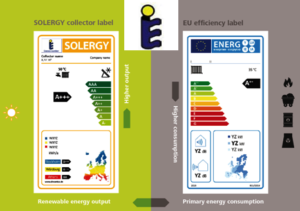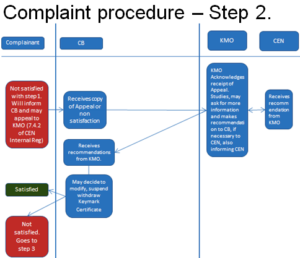Solar Keymark Network gets new chairman
August 7, 2018
 The Solar Keymark Network meeting held in Spain this March saw a new chairman, Andreas Bohren (see photo), leading a reshaped organisation. From now on, the members of the network, also known as SKN, will have a physical meeting in spring and an online one in autumn. Votes can be held in between and in 2019, the former head of the CEN/TC 312 committee, Vassiliki Drosou from Greece, will replace Jan Erik Nielsen from Denmark as the manager of SKN. Solarthermalworld.org spoke with Bohren, who works at the Swiss-based SPF – Institute of Solar Technology, to learn more about his objectives.
The Solar Keymark Network meeting held in Spain this March saw a new chairman, Andreas Bohren (see photo), leading a reshaped organisation. From now on, the members of the network, also known as SKN, will have a physical meeting in spring and an online one in autumn. Votes can be held in between and in 2019, the former head of the CEN/TC 312 committee, Vassiliki Drosou from Greece, will replace Jan Erik Nielsen from Denmark as the manager of SKN. Solarthermalworld.org spoke with Bohren, who works at the Swiss-based SPF – Institute of Solar Technology, to learn more about his objectives.Photo: Solar Heat Europe
solarthermalworld.org: What progress have you made with regard to the Solar Keymark certification scheme?
Bohren: We have achieved a high level of market coverage. The SKN consists of 12 certification bodies and 21 accredited test labs. Regarding certification, there are altogether 1,395 collectors and systems and brands by 463 manufacturers and distributors from 41 countries.
solarthermalworld.org: Is Solar Keymark needed to apply for incentive programmes in many countries?
Bohren: Often, the Solar Keymark is a complementary certification, required to apply for incentives. In some cases, we can’t say it is obligatory, as it is considered equivalent to national certification. This map describes in more detail the opportunities to gain access to funding when Solar Keymark certification is available.
solarthermalworld.org: What are your main objectives as chairman?
Bohren: Currently, Solar Keymark is the best-recognised quality mark for solar thermal products worldwide, but we will need to put in some effort to keep it this way. We are in the process of giving the Solar Keymark website and our publications a facelift.
We have started tackling some bigger challenges related to transparency, market surveillance and complaints handling. We need to improve procedures for verifying that products available for sale conform to the ones we tested and certified. We take the issue of potential Solar Keymark misuse very seriously. I believe the best way to resolve the issue is to provide more technical details about certified products to the public. At a later stage, it might be an option to introduce tools for market surveillance.
Another major challenge is the interplay between certification and EU requirements, such as the ones laid down in the Construction Products Regulation and the Ecodesign and Energy Labelling Directives. The SKN has been exploring new topics – material efficiency and reparability among them. Harmonising procedures is near the top of our agenda. The goal is to cut through the red tape and lend a helping hand to businesses trying to comply with certification as well as EU rules. Furthermore, we think it is important to highlight the differences between Solar Keymark, as a top-quality mark, and labels such as CE or other self-certification schemes requiring only basic conformity with EU legislation.
solarthermalworld.org: Are you intent on increasing the number of certified products or systems?
Bohren: Of course, it would be good to have more Solar Keymark certificates, but it should be noted that there is a limited European market for them. Nevertheless, I am sure that Solar Keymark has potential for growth, mainly if more national governments or organisations can be convinced to make incentive or tax schemes dependent on Solar Keymark certification. Another way to prompt more of the industry to adopt it may be to include some sort of carbon offset or life cycle information on Solar Keymark certificates, or both.
In addition, I feel it is important to underline the need for more industry involvement in internal decision-making processes of the SKN. I am convinced that in the near future, it will be possible to get many more manufacturers to participate and support the activities of the network to see it become more efficient and valuable to the entire solar thermal community.
solarthermalworld.org: Do you expect any conflict between Solar Keymark and other labelling schemes?
Bohren: No, I don’t. If there is an issue, we will solve it. Of course, we are keeping up with new labels on the market to see if they could present a conflict or if there are any important developments elsewhere. Since Solar Keymark and other labels are based on international standards, it is important to be aware of changes planned for those standards. In the past, most revised product specifications used to be part of annexes to Solar Keymark rules, so our work seems to have a strong influence on standards and labelling schemes. Considering this, I’m certain that new ideas for labelling will most likely be developed under the auspices of the SKN.
Websites of organisations mentioned in this article:
Solar Keymark: http://www.solarkeymark.org/


